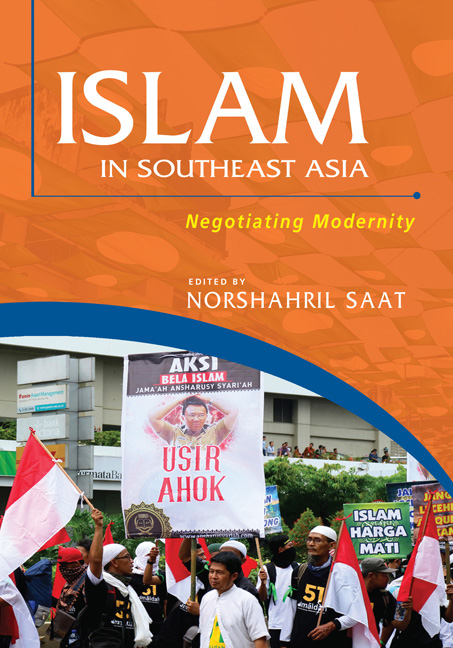1 - Introduction
Published online by Cambridge University Press: 08 June 2019
Summary
The aim of this volume is to understand contemporary sociocultural and political challenges facing Islam in Indonesia, Malaysia, and Singapore. It is particularly interesting to examine how Muslims in these three countries grapple with modernization and change which has significantly impacted laws, politics, ideas, and consumption patterns. Undeniably, there are many books in the market that have addressed similar concerns. Previously, ISEAS – Yusof Ishak Institute has published books discussing similar issues. They include Readings on Islam in Southeast Asia (compiled by Ahmad Ibrahim, Sharon Siddique, and Yasmin Hussain in 1985); Islam in Southeast Asia: Political, Social and Strategic Challenges for the 21st Century (edited by K.S. Nathan and Mohammad Hashim Kamali in 2005); Voices of Islam in Southeast Asia: A Contemporary Sourcebook (complied by Greg Fealy and Virginia Hooker in 2006).
This edited volume does not attempt to cover Islam in all Southeast Asian countries, except for the three maritime states mentioned above. It is also focusing less on security issues such as the ISIS (Islamic State in Iraq and Syria) or Al-Qaeda threat. In fact, the book makes a deliberate move not to cover separatist movements in the Southern Philippines and Southern Thailand, or the humanitarian crisis in Myanmar, even though these issues concern Muslims as well. The book is a modest attempt to take stock on recent developments facing the three countries that scholars used to consider the bastion of “moderate” Islam.
Quite the reverse, scholars today are alarmed that Islam in Southeast Asia is becoming more conservative, radical and intolerant. They are also anxious with groups promoting political Islam (also referred to as Islamism) and how such fundamentalist ideas will impact multicultural societies in the region. Conservative preachers can now mobilize thousands of people to support their exclusivist agendas, causing much distress to the scholars.
Undeniably, Muslims in Indonesia, Malaysia and Singapore have begun to outwardly express their piety. The dakwah movement (referred to as Islamic resurgence by some) which emerged in the 1970s decreased the Malay and Indonesian character of how Islam is practised in the region.
- Type
- Chapter
- Information
- Islam in Southeast AsiaNegotiating Modernity, pp. 1 - 10Publisher: ISEAS–Yusof Ishak InstitutePrint publication year: 2018

